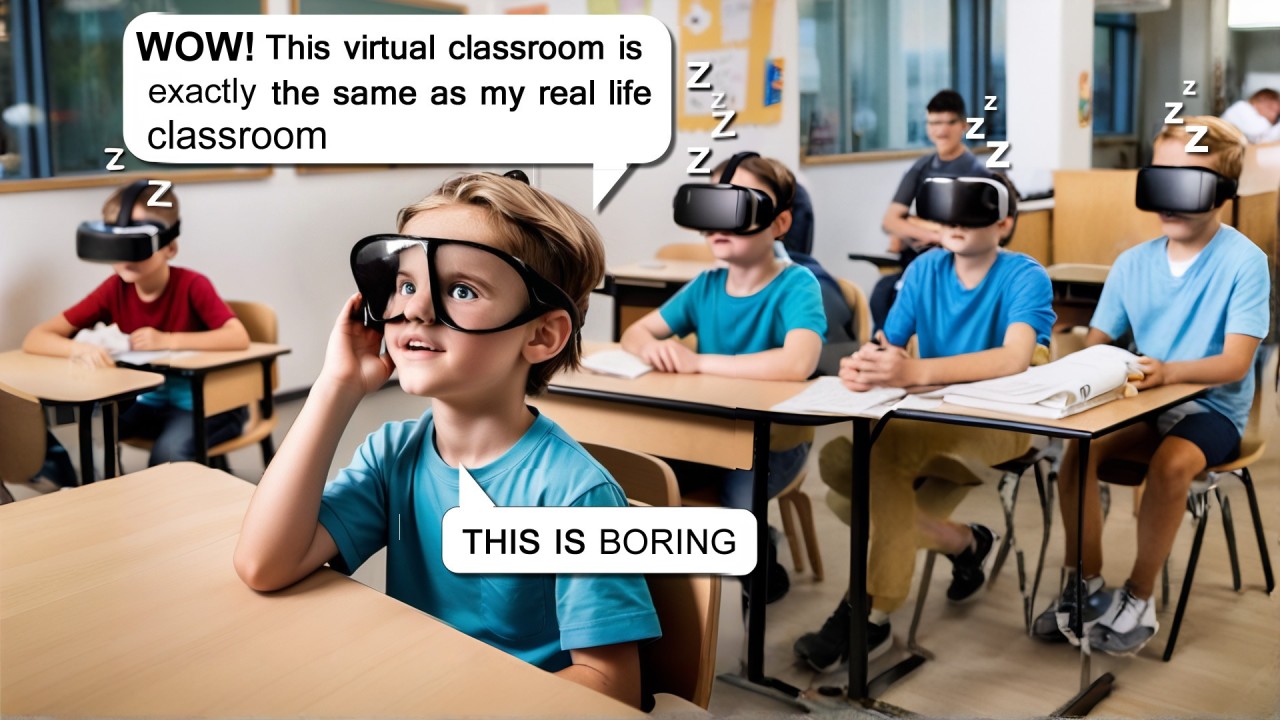Virtual Reality is the Magic Bus. I don’t remember the Magic Bus ever driving to school. It brought students on fantastic adventures, not to Building B / Classroom 1.
This post will annoy a lot of people that follow me, but I am going to give my opinion here as I feel we are wasting a lot of resources that could be better deployed elsewhere within education. I’ve seen a trend where budgets are being spent on digital twins/clones of university campuses and classroom environments that really serve no value within education other than possibly campus tours for those that are not familiar with a particular location.
Spending $50k for a 3D artist to create a clone of your administration buildings when education budgets are tight makes no sense to me. I am however a very open-minded person so please change my mind in the comments below. Let me explain further the context for my thoughts first before you respond.
At ENGAGE XR we have been in the immersive education space for over 10 years working with some of the best in the world at Stanford University Virtual Interaction Lab ( https://vhil.stanford.edu/) and University of Oxford along with over 200 educational clients from schools and colleges around the world. We have an array of virtual lecture halls, digital campus locations and many classroom environments that replicate the real world but from data we collect, these are rarely used among our tens of thousands of students who use our ENGAGE platform daily.
 Virtual Environments Alternative to Traditional Classrooms
Virtual Environments Alternative to Traditional Classrooms
Evidence suggests that students often perform better and are more engaged in virtual environments that break away from traditional classroom replicas. A study which was conducted by Virtual Human Interaction Lab at Stanford Univeristy found that there was a reported 50% more engagement in lessons presented via VR compared to standard classroom activities, and a 20% improvement in knowledge creation tasks. These innovative settings, when thoughtfully designed, leverage the unique capabilities of virtual spaces to foster collaboration, deeper engagement, and applied learning. I would highly recommend you visit ( https://vhil.stanford.edu/publications/learning ) to review the great work Jermey Bailenson and his team at Stanford University have conducted in this area over the past 20 years.
Real World Examples of Virutal Reality Education In Action
For example, The Virtual Film School which is built on the ENGAGE platform is held within real life film sets with digital twin props and cameras. None of the classes are held in lecture halls or classrooms. In fact, one of the collaboration spaces is inside a giant Red Camera where students are the size of ants walking around inside. Other great examples are the learning environments OptimaEd , Inspired Education Group and Lobaki create for their students replacing traditional classrooms and campus environments with collaborative interactive experiences where students are encouraged to explore, discover and learn for themselves.
ENGAGE has over 150 learning environments from the surface of mars to a roman amphitheatre. Why limit yourself to replicate a classroom or science lab. Complete experiments in settings where they might actually take place in the safety of a virtual simulation. Use your physical buildings for everything else. It’s much better to upgrade your schools immersive hardware and purchase individual licenses for students to create their own learning experiences then waste money on cloning something virtually that you already own and won’t get much use from after your initial social media post or press release.
Digital Twins do have a place
Digital Twins do have a place where you are teaching drills that require memory of that location or within enterprise where you need an exact replica, not just looking like a real location but acting like a real location, to teach employees about human behaviour within a building or the physics of a fire spreading in a building.
If Virtual Reality is the magic bus, then I see ENGAGE as the magic wand. What will you do with your magic powers?
Opinion Piece: Written by David Whelan

